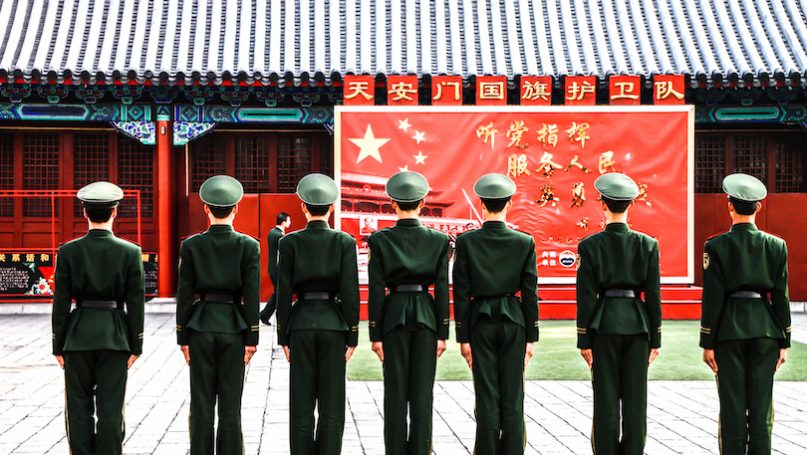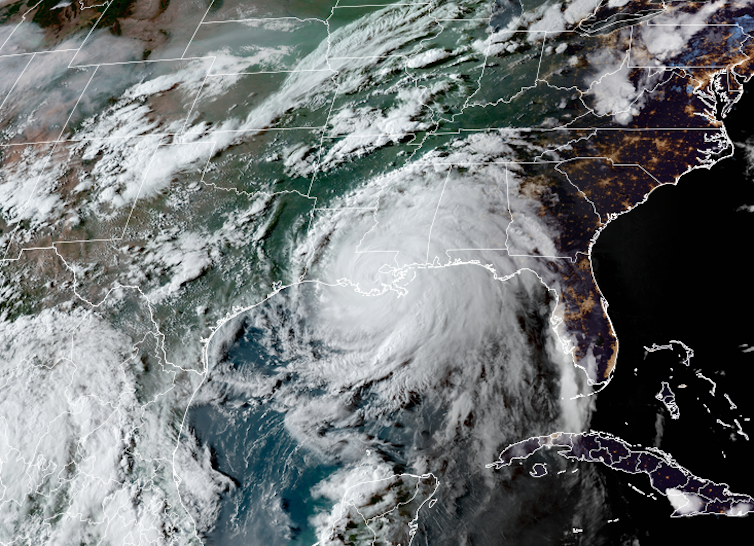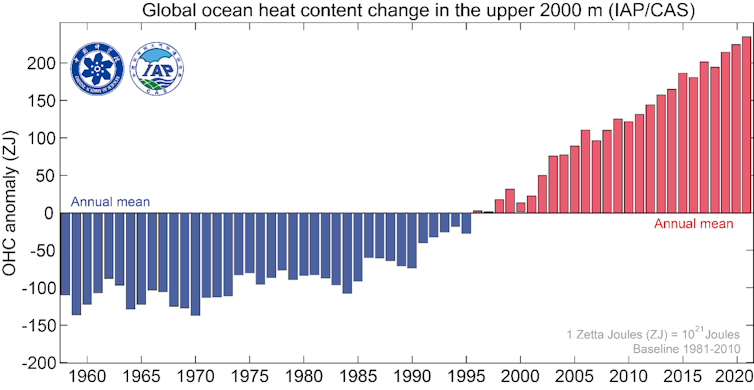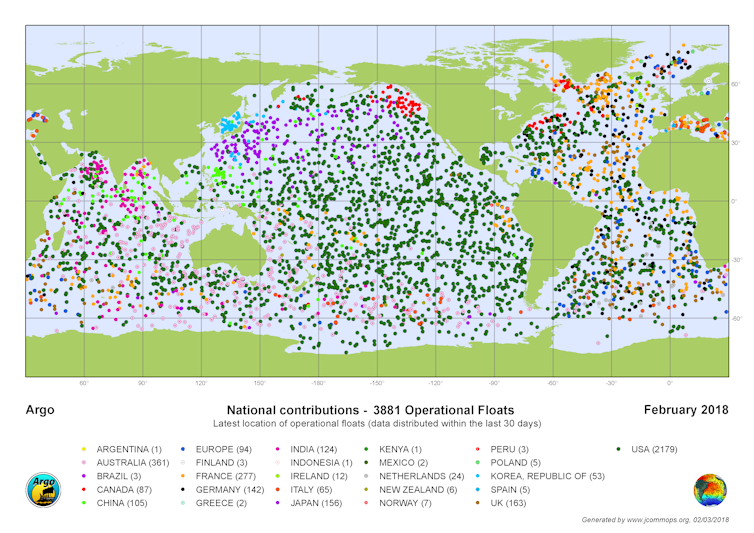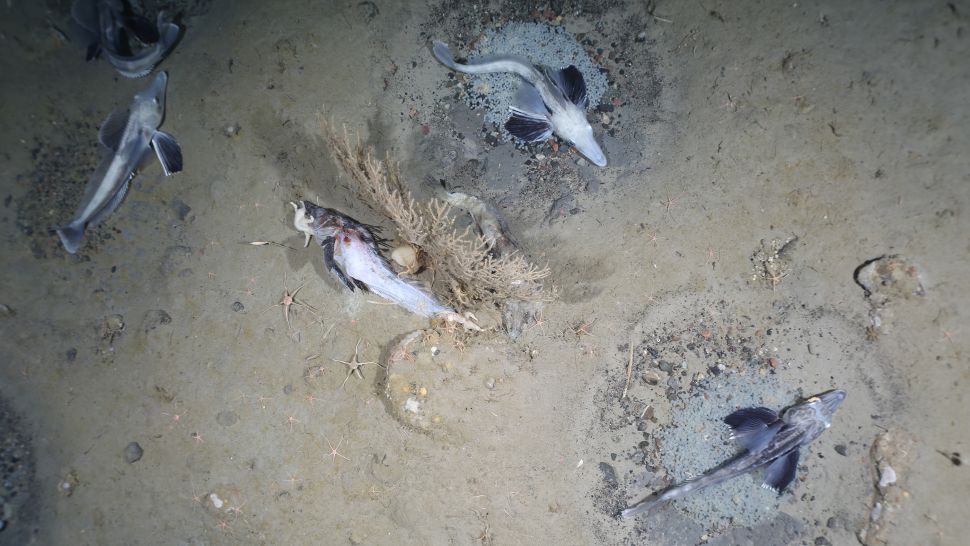There is increasing anxiety in the West about China’s growing assertiveness on the international stage. This anxiety is evident in the policies of western states. The USA has described China as ‘a sustained challenge’ to the international system (The White House, 2021 p.8). Meanwhile, the UK is investing in its ‘China-facing capabilities’ and Australia is purchasing nuclear submarines to hedge against China’s presence in the South China Sea (HM Government, 2021 p.22; Masterson, 2021). Undoubtedly, China’s rise poses a challenge to the status quo. If for no other reason than that it represents an alternative to the western-centric international system (Turin, 2010). Nevertheless, representing an alternative to the status quo does not mean that Chinese foreign policy is inherently motivated by challenging the West.
Such anxious perspectives of Chinese foreign policy are rooted in realism, a theory of international relations which assumes actors to be inherently self-interested and motivated by the egoistic pursuit of power (Waltz 2001; Mearshimer 2003). According to this ontology, the potential power to be gained by acting assertively is enough to account for China’s foreign policy motivations. Social constructivism, on the other hand, posits that an actor’s motivations are rooted in the social interactions between groups within the state (Leira, 2019). Using this lens, China’s foreign policy motivations must be understood in relation to its domestic politics. Adopting a socially constructivist ontology, this article argues that Chinese foreign policy is motivated, at least in part, by domestic nationalist pressures and that, by way of the security paradox, western policies are fuelling Chinese assertiveness.
This article proceeds as follows. Firstly, by presenting the Chinese Communist Party’s (CCP’s) twin-pillar model of legitimacy and its increased reliance on nationalism to maintain its regime’s legitimacy. It then outlines China’s nationalist movement and its foreign policy agenda, using the 2010 Senkaku/Diaoyu dispute to show how nationalist pressure affects the CCP’s foreign policy decision-making. Consideration is then given to the CCP’s social controls, showing that the CCP is unable to mitigate nationalist pressure via its propaganda infrastructure. The final section then presents the security paradox concept and how the West’s realist assumptions and anxious policies are fuelling Chinese assertiveness.
Pillars of Legitimacy
After Mao’s death, the CCP could no longer rely upon a cult of personality to provide popular support for its regime (Coble, 2007). Rather, the CCP has since premised its regime legitimacy ‘upon the twin pillars of nationalism and economic prosperity (Reilly, 2004 p.283). This model of legitimacy predicates the CCP’s regime security upon its ability to improve the economic conditions of the Chinese people and its ability to protect and pursue China’s national interests.
Certainly, the CCP has closely associated itself with China’s economic success and national interests. The CCP-owned People’s Daily, for example, regularly praises the CCP for fostering China’s ‘thriving and diverse economy’ (Cai, 2021). It goes as far as to praise specific CCP economic policies such as the 13th Five Year Plan, which is credited with growing China’s digital economy by 16.6% from 2016-20 (People’s Daily Online, 2021a). Also published were calls to support the CCP in protecting national interests from foreign intervention. For example, by purchasing Xinjiang Cotton against the backdrop of international condemnation of China’s treatment of Xinjiang’s Uighur population (People’s Daily Online, 2021b).
Notably, Chinese president Xi Jinping invoked both pillars when speaking at the CCP’s 100th-anniversary celebrations. Stating that ‘only socialism with Chinese characteristics can develop China’ (BBC News, 2021) In this statement, the CCP and its specific brand of socialist ideology are presented as essential to China’s economic development. Meanwhile, Xi also made an overtly nationalistic pledge that the CCP will:
never allow anyone to bully, oppress or subjugate China. Anyone who tries to do that will have their heads bashed bloody against the Great Wall of Steel forged by over 1.4 billion Chinese people (Xi via BBC News, 2021).
Evidently, the CCP is eager to associate itself with economic development and protecting the Chinese nation. Doing so in accordance with the twin pillar model to maintain its regime legitimacy.
However, an emerging issue with the twin pillar model is that the CCP increasingly struggles to ensure economic prosperity. Central to the economic pillar are Deng Xiaoping’s liberal economic reforms. Since their introduction in the early 1980s, per capita income has increased by 2500% and over 800 million Chinese have been saved from poverty, conferring popular support for the CCP’s economic stewardship (Denmark, 2018). Yet, structural economic challenges including a declining labour force, low per-capita productivity, and an over-reliance on manufacturing result in barriers to sustained growth (World Bank, n.d.). Consequentially, 373 million Chinese continue living in some degree of relative poverty (Ibid.).
As economic prosperity becomes harder to guarantee, the integrity of the economic pillar is weakened. This is an issue of which the CCP is aware. China’s growth rate in 2018 was 6.6% (Kuo, 2019), significantly below both China’s highs of over 10% growth in the 2000s, and the necessary rate needed to maintain high levels of employment (World Bank, n.d.). This led to concerns among CCP officials that rising unemployment might lead to social unrest (Kuo, 2019). This included Premier Li Keqiang, who publicly acknowledged ‘public dissatisfaction’ over China’s stagnating economic performance (Bradsher and Buckley, 2019).
Given the economic pillar’s weakness, the CCP must rely more upon the nationalist pillar to carry the burden of its regime legitimacy. Hence, the CCP has been less likely to constrain popular expressions of nationalist in recent years (Abbott, 2016). In 2005, tens-of-thousands of Chinese nationalists protested Japanese textbooks for their omission of atrocities committed against China during the Second Sino-Japanese War (Watts, 2005). Protesters attacked Japanese businesses and property, including Japan’s embassies and consulates (Yardley, 2005). Some local CCP branches and low-level officials encouraged the demonstrations, but the central CCP discouraged the nationalist demonstrations (Watts, 2005). These efforts included deploying riot police, shutting down public transport and the Minister of Public Security declaring the protests illegal and citing concern for Sino-Japanese relations as the reason for this crackdown (Yardley, 2005).
In stark contrast, the CCP did relatively little to stop anti-Japanese protests in 2012. This time, nationalists in over 180 Chinese cities gathered in the tens-of-thousands to protest Japan’s nationalisation of the Senkaku/Diaoyu Islands (Gries et al., 2016), an island chain in the East China Sea claimed by China but administered by Japan. Notably, senior CCP officials failed to comment on the protests while the dispute was ongoing (Buckley, 2012). Tensions in Sino-Japanese relations were higher in 2012 compared to 2005 (Gries et al., 2016), meaning it is challenging to isolate China’s economic performance as a variable accounting for the difference in the CCP’s response. However, it is notable that China’s economic growth rate slowed by roughly one-third from 11.39% in 2005 to 7.86% in 2012 (World Bank, n.d.). Accordingly, as per the twin-pillar model, the CCP’s reluctance to constrain the nationalistic anti-Japanese protests was to be expected, any anti-protest measures risking the nationalist credentials upon which the CCP increasingly relied as the economic pillar faltered.
Chinese Nationalism and the CCP’s Foreign Policy
The CCP’s reliance on the nationalist pillar confers considerable influence upon China’s nationalist movement. This in turn requires the CCP to acquiesce to the nationalist agenda in its foreign policy to maintain its legitimating nationalist credentials. Chinese nationalism is not a unified movement but consists of groups and organisations sharing a common Chinese nationalism sensitive to what it considers affronts to the Chinese nation and vocal in its activism against said affronts (Reilly, 2004; Coble, 2007; Johnston, 2017). Some of these groups and organisations have formal links with the CCP, for example, the Communist Youth League and nationalists working in local CCP branches (Watts, 2005; Kecheng, 2020). Others operate more independently of the CCP, such as nationalists among the Chinese diaspora and most of China’s online activist groups (Modongal, 2016; Fang and Repnikova, 2018).
These groups subscribe to a broad nationalist agenda and expect the CCP to use China’s growing economic and military strength to pursue China’s interests (Abbott, 2016). Specifically, they demand justice for historical repression, recognition of China commensurate with its newfound strength, that the CCP mobilise against threats to Chinese sovereignty, and that China’s sphere of influence be respected (Boylan et al., 2020). This agenda was evident in the recent US-China trade war. Nationalists called for sanctions in response to what they perceived as a US attempt to reject China’s status as a leading global economy, comparing US tariffs to the repressive economic restrictions imposed upon China by western imperialists in the 1800s (Ibid.).
Understanding the nationalist agenda and the CCP’s reliance on the nationalist pillar for regime legitimacy is significant. This is because the CCP must adhere to the nationalist agenda in its foreign policy to live up to its nationalist credentials (Coble, 2007). This is apparent in how, against the backdrop of China’s slowing economy, nationalist pressure has coincided with a hard-line stance from the CCP in China’s foreign relations. An example of this can be found as early as the 2010 Senkaku/Diaoyu dispute (also known as the Trawler Incident). This dispute began after a Chinese fishing trawler collided with two Japanese coastguard vessels in the territorial waters of the Senkaku/Diaoyu Islands, after which Japan arrested the trawler’s crew. Initially the CCP responded relatively benignly, limited to Foreign Ministry Spokeswoman Jiang Yu issuing a statement requesting that Japan ‘refrain from so-called law-enforcement activities in the East China Sea’ (Johnson 2010).
However, nationalistic anti-Japanese protests began in the days following the incident. The protesters called upon the CCP to take further action against Japan. One protester outside the Japanese embassy explained: ‘I want our government to be stronger. They shouldn’t let the Japanese bully us on our own soil!’ (Lim, 2010). Meanwhile, a protester in Shanghai summarised the protests as follows: ‘We came here to appeal for fairness and for the right to ask for our captain back. We regret the government’s weakness in diplomacy’ (Al Jazeera, 2010a).
Evidently, the China nationalist movement, in response to a perceived affront in the form of the trawler incident, sought to pressure the CCP into resolving the dispute in accordance with the nationalist agenda. The day after the protests started, and also only a day after their initial statement, Spokeswoman Jiang announced naval deployments to the East China Sea. This demarcated the first instance of regular Chinese patrols in the region since the normalisation of Sino-Japanese relations in the 1970s (Green et al., 2017). In the following weeks, as the nationalistic anti-Japanese protests continued, China also suspended diplomatic contacts with Japan and ceased rare earth exports essential to Japanese manufacturing (Hafeez, 2015). Chinese Premier Wen Jiabao also threatened Japan with retaliation while in New York for a UN conference (Al Jazeera, 2010b).
The fact that the CCP pivoted from a diplomatic response to naval deployments within one day, and that this pivot coincided with nationalist pressure upon the CCP, shows nationalism’s affect upon Chinese foreign policy in action. The rapid change in response to Japan resulting from the CCP wanting to uphold its nationalist credentials regardless of the implications for Sino-Japanese relations.
Of course, it is plausible that the CCP simply desired to take a strong stance against Japan and that anti-Japanese sentiment merely offered the pretext for the CCP to flex its newfound military strength. Taffer (2020), for example, presents the trawler incident as an attempt by the CCP to test the USA’s commitment to its Japanese ally. However, the CCP made efforts to repair Sino-Japanese relations after the flashpoint of the dispute passed. These included the resumption of rare earth exports and mild discouragement of anti-Japanese protests once nationalist pressure subsided in the following months (Green et al., 2017). This indicates that the CCP did not want to damage Sino-Japanese relations, but rather that nationalist pressure forced the CCP to act in accordance with the nationalist agenda. Thereby safeguarding its nationalist credentials as per its increasing reliance upon the nationalist pillar to secure its regime legitimacy.
The Limits of the CCP’s Control
Reilly (2011) argues that the CCP practices effective social control over its nationalist movement by leveraging China’s propaganda infrastructure to direct and disperse nationalist sentiment as needed. If true, this would mean that the CCP faces no pressure to adhere to the nationalist agenda. It could merely adapt its propaganda messaging to counter nationalist pressure without appeasing the nationalist agenda in its foreign policy decision-making.
Yet, the CCP has failed to restrict nationalist activism against foreign actors, illustrating the limits of the CCP’s control over China’s nationalist movement. For example, in 2020, against the backdrop of international condemnation of events in Hong Kong, the CCP struggled to crackdown on a nationalist anti-foreign smear campaign on social media (Lo, 2020). Notably, the Communist Youth League, a nationalistic youth movement affiliated with the CCP, provocatively endorsed a ‘social media crusade’ against foreign governments sympathetic towards Hong Kong (Kecheng, 2020). This shows that the CCP struggles to exert social control over nationalist organisations it has formal links with, let alone the broader Chinese nationalist movement.
The limitations of the CCP’s crackdown on the nationalist social media campaign, and thus limitations of the CCP’s social controls over China’s nationalist movement, were most prominent in May 2020. Chinese nationalist hacktivists hijacked the Twitter account of the Chinese embassy in Paris, posting a picture depicting the USA as the personification of death, trailing blood along a corridor and knocking at Hong Kong’s door with the caption ‘who’s next?’ (Lo, 2020). This is significant for two reasons. Firstly, the response from the Chinese embassy was to rapidly delete the post and issued formal apologies to France and the USA (Keyser, 2020). These actions are inconsistent with a CCP truly motivated to assert China’s national interests to the detriment of its foreign relations, but consistent with a CCP struggling to control China’s nationalist movement.
Secondly, and most importantly, this example shows Chinese nationalists to be hijacking the CCP’s propaganda infrastructure to pursue their foreign policy agenda. This points to a reality in which, rather than the CCP having social control of China’s nationalist movement through its propaganda infrastructure, Chinese nationalists find ways to escape the CCP’s social controls. It also shows that they are willing to respond independently of the CCP to perceived affronts to the Chinese nation if they feel the CCP fails to do so adequately.
Given the limitations of the CCP’s social controls, the CCP cannot merely adapt its propaganda messaging to offset nationalist pressure. Rather, it must contend with the dilemma of either acquiescing to the nationalist agenda, even to the detriment of China’s foreign relations, or risking its nationalist credentials and thus regime legitimacy. This demonstrates that domestic nationalist pressures are a significant factor in China’s foreign policy decision-making despite the CCP’s propaganda infrastructure.
Why Does it Matter?
Understanding the nationalist pressures on the CCP’s foreign policy decision-making is important for two reasons. Firstly, from an academic standpoint, it serves as a case study in working past initial assumptions about an actor’s motivations. Whereas western policymakers anxiously assume China’s motivations in accordance with realism, this article has presented an alternative explanation. By looking at an actor’s foreign policy as a product of its domestic politics, it is possible to provide a more meaningful explanation of their foreign policy motivations. In this case, that China is motivated, at least in part, by the CCP’s desire to uphold its legitimating nationalist credentials in the face of pressure to adhere to the foreign policy agenda of its nationalist movement.
Secondly, in terms of the practise of international relations, it shows how the realist assumptions of western policymakers and their respective China policies risk becoming self-fulfilling prophecies. This is in accordance with the security paradox concept. Also known as the security dilemma, the security paradox refers to a cycle in which two sides, through their efforts to mitigate their own uncertainty and insecurity, trigger uncertainty and insecurity in the other (Booth and Wheeler, 2007). As this cycle progresses tensions may escalate to the point that conflict emerges despite, paradoxically, neither side necessarily holding any ill-will towards the other at the start of the paradox (Ibid.). An example of a security paradox is the Anglo-German naval arms race during the prelude to World War I. In this, Germany’s maritime ambitions caused Britain to expand its navy, in turn lea ding Germany to accelerate its naval programme and thus Britain to develop larger battleships, and so on (Maurer, 1997).
A similar mechanic can be observed today regarding the West and its policies towards China. Western states, anxious about China’s rise and growing assertiveness, are enacting policies in preparation of a Chinese challenge to the status quo. Purchasing nuclear submarines and investing in ‘China-facing capabilities’. While understandable given their anxiety and realist assumptions, these policies risk provoking Chinese nationalists. Thereby generating pressure on the CCP to enact the assertive foreign policy the West wants to avoid. Likely leading to further western policies that risk being interpreted as an affront by Chinese nationalists. If unchecked, this could lead to hostility despite both the West and the CCP merely attempting to mitigate their own insecurities.
That western policies are provoking Chinese nationalists is clear to see. Minister Yang Xiaoguang of the Chinese embassy in London has explained that the Chinese people have expressed ‘antipathy and opposition’ to the UK’s plans to China policy (Embassy of the People’s Republic of China in the United Kingdom of Great Britain and Northern Ireland, 2021). This indicates domestic nationalist pressure on the CCP to respond to the UK’s policy. Similarly, in response to American posturing and Australia’s acquisition of nuclear submarines, Chinese nationalists briefly began calls for the CCP to declare war on AUKUS (Davidson and Blair, 2021). These examples both highlight how, in response to western policy, China’s nationalist movement is pressuring the CCP to adhere to its foreign policy agenda. In doing so, making the case that the West is, by way of its China policies, creating the assertive China that fuels their own anxieties.
Conclusion
Evidently, China’s foreign policy motivations are influenced by domestic nationalist pressures and western policy. This is apparent considering the twin-pillar model. As economic prosperity has become harder for the CCP to guarantee, it has had to increasingly rely upon nationalism for legitimacy. This confers considerable influence upon China’s nationalist movement. China’s nationalist movement subscribes to a broad nationalist agenda, which it wants the CCP to adhere to in its foreign policy decision-making. This has affected China’s foreign policy in practise, apparent as early as 2010 when the CCP quickly pivoted to align more closely to the nationalist agenda during the 2010 Senkaku/Diaoyu dispute. Some have argued that the CCP’s control over China propaganda infrastructure confers effective control over China’s nationalist movement. However, as discussed, the CCP’s social controls over Chinese nationalists are in fact limited. With nationalists even bypassing said propaganda infrastructure and directly pursuing their foreign policy agenda when they consider the CCP to failed to rectify affronts to the Chinese nation.
Understanding the domestic pressures motivating Chinese foreign policy showcases the importance of moving beyond realist assumptions and highlights how we can achieve a fuller understanding by considering the domestic when we study the international. It also shows that western foreign policies are, by way of the security paradox, generating the assertive China that western policy was intended to mitigate. As the West provokes Chinese nationalists, they are pressuring the CCP to enact more assertive foreign policies, in turn causing further anxiety in the West. Further study into how China’s domestic politics informs its foreign policy could offer additional insights motivations. It could also inform western policies towards China. Lessening the risk of provoking Chinese nationalists and thus better mitigating western anxieties.
References
Abbott, T.F. 2016. “Chinese Nationalism or the Chinese Communist Party: Who is Really Guiding China’s Foreign Policy?”. Accessed 12/3/21. http://www.inquiriesjournal.com/articles/1455/chinese-nationalism-or-the-chinese-communist-party-who-is-really-guiding-chinas-foreign-policy.
BBC News. 2021. “CCP 100: Xi Warns China Will Not Be ‘Oppressed’ In Anniversary Speech”. Accessed 1/7/21. https://www.bbc.co.uk/news/world-asia-china-57648236.
Booth, K. and N.J. Wheeler. 2007. The Security Dilemma: Fear, Cooperation and Trust in World Politics. Chippenham; Palgrave Macmillan.
Bradsher, K. and C. Buckley. 2019. “Facing Slowing Economic Growth, China’s Premier Promises Relief for Business”. Accessed 20/2/21. https://www.nytimes.com/2019/03/04/business/china-premier-li-keqiang-speech.html.
Buckley, C. 2012. “Analysis: Chinese Leaders May Come to Regret Anti-Japanese Protests”. Accessed 17/4/21. https://www.reuters.com/article/us-china-japan-politics-idUSBRE88I0AU20120919.
Cai, Q. 2021. “Sharing Economy Thrives in China”. Accessed 7/6/21. http://en.people.cn/n3/2021/0325/c90000-9832606.html
Coble, P.M. 2007. “China’s “New Remembering” of the Anti-Japanese War of Resistance, 1937-1945”. The China Quarterly, 190: 394-410.
Davidson, H. and G. Blair. 2021. “China Warns US-UK-Australia pact could ‘hurt their own interests’.” Accessed 19/9/21. https://www.theguardian.com/world/2021/sep/16/cold-war-mentality-china-criticises-aukus-us-uk-australia-submarine-pact.
Denmark, A. 2018. “40 Years Ago, Deng Xiaoping Changed China – And The World”. Accessed 14/1/21. https://www.washingtonpost.com/news/monkey-cage/wp/2018/12/19/40-years-ago-deng-xiaoping-changed-china-and-the-world/.
Embassy of the People’s Republic of China in the United Kingdom of Great Britain and Northern Ireland. 2021. “Chargé d’Affaires Minister Yang Xiaoguang Gives Live Interview on Sky News Tonight”. Accessed 21/3/21. http://www.chinese-embassy.org.uk/eng/EmbassyNews/t1861979.htm.
Green, M. et al. 2017. “Counter Coercion Series: Senkaku Islands Trawler Collision”. Accessed 14/7/2021. https://amti.csis.org/counter-co-senkaku-nationalization/.
Gries, P.H et al. 2016. “Popular Nationalism and China’s Japan Policy: The Diaoyu Islands Protests, 2012-2013”. Journal of Contemporary China 25, 98: 264-276.
HM Government. 2021. “Global Britain in a Competitive Age: The Integrated Review of Security, Defense, Development and Foreign Policy”. Accessed 21/3/21. https://assets.publishing.service.gov.uk/government/uploads/system/uploads/attachment_data/file/969402/The_Integrated_Review_of_Security__Defence__Development_and_Foreign_Policy.pdf.
Johnson, I. 2010. “China and Japan Bristle Over Disputed Chin of Islands”. Accessed 22/5/19. https://www.nytimes.com/2010/09/09/world/asia/09beijing.html.
Kecheng, F. 2020. “The Long Read: Is Cyber-Nationalism on the Rise in China?”. Accessed 7/2/20. https://theasiadialogue.com/2020/02/07/the-long-read-is-cyber-nationalism-on-the-rise-in-china/.
Keyser, Z. 2020. “Chinese Embassy in France Tweets Anti-US, Anti-Israel Imagery In Error”. Accessed 17/6/20. https://www.jpost.com/international/chinese-embassy-in-france-tweets-anti-us-anti-israel-imagery-in-error-629403.
Kuo, L. 2019. “China Warns of ‘Tough Struggle’ as it Cuts Growth Target to Lowest Since 1990”. Accessed 7/3/21. https://www.theguardian.com/world/2019/mar/05/china-economy-target-cut-tough-struggle-ahead-li-keqiang.
Leira, H. 2019. “The Emergence of Foreign Policy”. International Studies Quarterly 63, 1: 187-198.
Lo, K. 2020. “China Battles to Control Nationalist Narrative on Social Media”. Accessed 25/1/21. https://www.scmp.com/news/china/diplomacy/article/3086698/china-battles-control-nationalist-narrative-social-media.
Masterson, J. 2021. “U.S., UK Pledge Nuclear Submarines for Australia”. Accessed 3/11/21. https://www.armscontrol.org/act/2021-10/news/us-uk-pledge-nuclear-submarines-australia.
Maurer, J.H. 1997. “Arms Control and the Anglo-German Naval Race Before World War I: Lessons for Today?”. Political Science Quarterly 112, 2: 285-306.
Mearshimer, J. 2003. The Tragedy of Great Power Politics. London: W.W. Norton & Company
People’s Daily Online. (2021b. “Xinjiang Accounts for 87% of China’s Cotton Production”. Accessed 26/3/21. http://en.people.cn/n3/2021/0326/c90000-9832716.html.
People’s Daily Online. 2021a. “China’s Digital Economy Sees Continued Growth”. Accessed 26/3/21. http://en.people.cn/n3/2021/0324/c90000-9832102.html.
Reilly, J. 2004. “China’s History Activists and the War of Resistance Against Japan: History In The Making”. Asian Survey 44, 2: 276-294.
Reilly, J. 2011. Strong Society, Smart State: The Rise of Public Opinion In China’s Japan Policy. USA: Columbia University Press.
The White House. 2021. “Renewing America’s Advantages: Interim National Security Strategic Guidance”. Accessed 28/3/21. https://www.whitehouse.gov/wp-content/uploads/2021/03/NSC-1v2.pdf.
Turin, D.R. 2010. “The Beijing Consensus: China’s Alternative Development Model”. Inquiries 2, 1: 1-2.
Waltz, K. 2001. Man, The Sate and War. USA: Columbia University Press.
Watts, J. 2005. “Violence Flares As the Chinese Rage at Japan”. Accessed 16/6/20. https://www.theguardian.com/world/2005/apr/17/china.japan.
World Bank. n.d. “The World Bank In China”. Accessed 21/3/21. https://www.worldbank.org/en/country/china/overview.
Yardley, J. 2005. “China Moves to Crack Down on Protests Against Japan”. Accessed 24/4/21. https://www.nytimes.com/2005/04/23/world/asia/china-moves-to-crack-down-on-protests-against-japan.html.
Further Reading on E-International Relations

